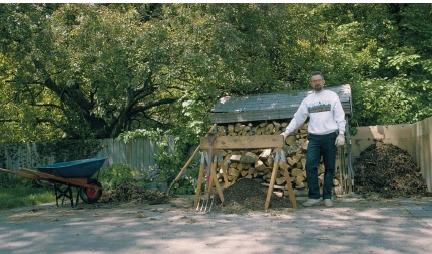Composting
Composting is the process of arranging and manipulating plant and animal materials so that they are gradually broken down, or decomposed, by soil bacteria and other organisms. The resulting decayed organic matter is a black, earthy-smelling, nutritious, spongy mixture called compost or humus. Compost is usually mixed with other soil to improve the

soil's structural quality and to add nutrients for plant growth. Composting is a method used by gardeners to produce natural fertilizer for growing plants.
Why compost?
Compost added to soil aids in its ability to hold oxygen and water and to bind to certain nutrients. It improves the structure of soils that are too sandy to hold water or that contain too much clay to allow oxygen to penetrate. Compost also adds mineral nutrients to soil. Compost mixed with soil makes the soil darker, allowing it to absorb the Sun's heat and warm up faster in the spring.
Adding compost to soil also benefits the environment. The improved ability of the soil to soak up water helps to prevent soil erosion caused by rainwater washing away soil particles. In addition, composting recycles organic materials that might otherwise be sent to landfills.
Words to Know
Decomposition: The breakdown of complex organic materials into simple substances by the action of microorganisms.
Humus: Decayed plant or animal matter.
Microorganism: A living organism that can only be seen through a microscope.
Nutrient: Any substance required by a plant or animal for energy and growth.
Organic: Made of or coming from living matter.
Composting on any scale
Composting can be done on a small scale by homeowners using a small composting bin or a hole where kitchen wastes are mixed with grass clippings, small branches, shredded newspapers, or other organic matter. Communities may have large composting facilities to which residents bring grass, leaves, and branches to be composted as an alternative to disposal in a landfill. Sometimes sewage sludge, the semisolid material from sewage treatment plants, is added. The resulting humus is used to condition soil on golf courses, parks, and other municipal grounds.
Materials to compost
Most organic (carbon-containing) materials can be composted—shredded paper, hair clippings, food scraps, coffee grounds, eggshells, fireplace ashes, chopped-up Christmas trees, and seaweed among them. Meat is omitted because it can give off bad odors during decomposition and attract rats and other pests. The microorganisms needed to break down the organic matter are supplied by adding soil or humus to the compost heap. Manure from farm or zoo animals makes an excellent addition to compost. Wastes from household pets are not used because they may carry disease.
How a compost heap works
A compost heap needs both water and oxygen to work efficiently. More importantly, the contents must be turned regularly to expose all areas to oxygen, which raises the temperature of the compost.
The processes that occur within a compost heap are microbiological, chemical, and physical. Microorganisms break down the chemical bonds of organic materials in the presence of oxygen and moisture, giving off heat. Some organisms work on the compost pile physically after it has cooled to normal air temperature. Organisms such as mites, snails, slugs, beetles, and worms digest the organic materials, adding their nutrient-filled excrement to the humus.
The nutrients
During the composting process, organic material is broken down into mineral nutrients such as nitrogen. Plants absorb nutrients through their roots and use them to make chlorophyll, proteins, and other substances needed for growth. Chlorophyll is the green pigment in plant leaves that captures sunlight for photosynthesis, the process in which plants use light energy to manufacture their own food.
[ See also Agrochemicals ; Recycling ; Waste management ]
Comment about this article, ask questions, or add new information about this topic: